Software documentation is all too often created as an afterthought, an extra feature developers don’t expect any ROI from.
This is quite a shame because software documentation can be an extremely powerful resource that can help both users and developers accomplish more than they ever thought possible.
Read on and learn about some incredible benefits of software documentation you may not have considered before.
Documentation Is the Preferred Format for Customer Support
Software documentation is a gift that keeps on giving. And nowhere is that more true than in the customer support department.
The fact of the matter is that effective customer support is becoming a key brand differentiator, especially in the wake of the COVID-19 pandemic.
That’s what a recent customer behavior survey has found, at least.
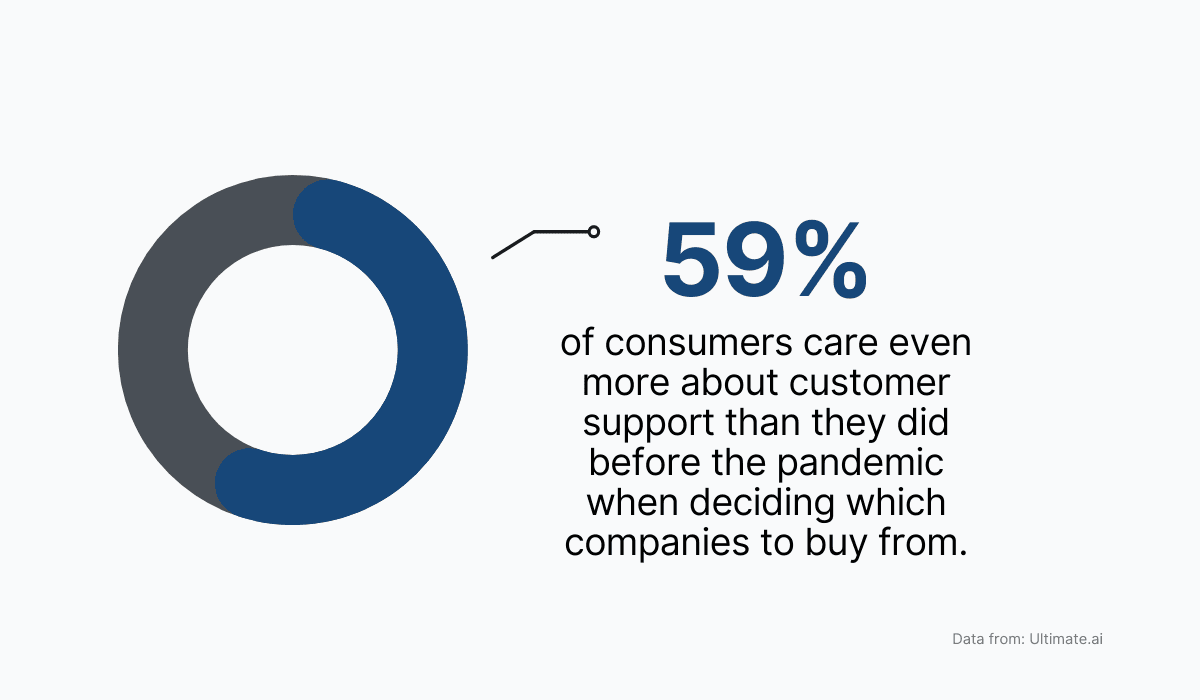
Source: Archbee.com
Therefore, if you’re not making customer support a priority, you’re already at a disadvantage.
Potential buyers are finding that your competition offers a better customer experience and opting for their services, meaning you’re missing out on revenue possibilities.
That being said, it’s also important to note that the nature of customer service is changing as well, and people are no longer interested in phoning customer support reps or writing long-winded emails about the issues they’re experiencing.
Much to the contrary, the modern consumer wants resources to solve their own problems. In other words, traditional customer support is out, and self-service support is in.
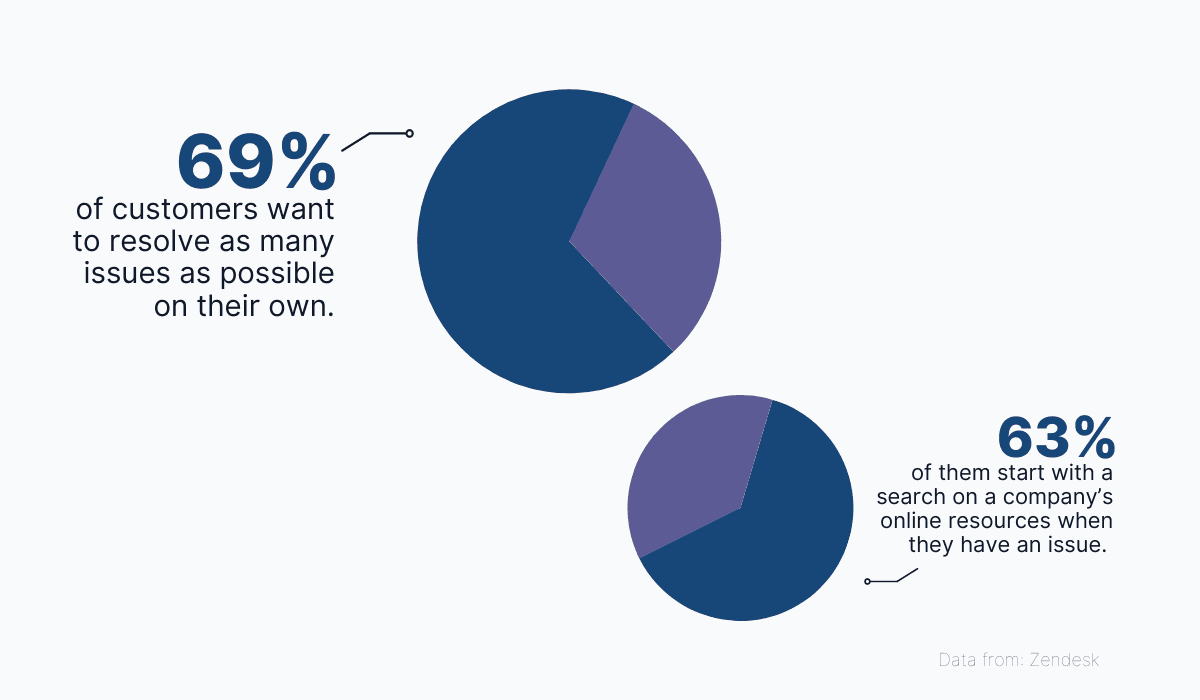
Source: Archbee.com
But what does self-service support even mean?
In a nutshell, self-service support methods are the ones that help customers resolve issues without the involvement of a human agent from the customer support team.
For software users, these methods mainly refer to online documentation available in the provider’s domain.
Resources such as tutorials, user guides, FAQ sections, and troubleshooting articles all fall under this category.
For instance, here’s CI Direct Investing’s documentation page, where clients can find articles that will help them fix known issues or learn how to complete tasks in the software.
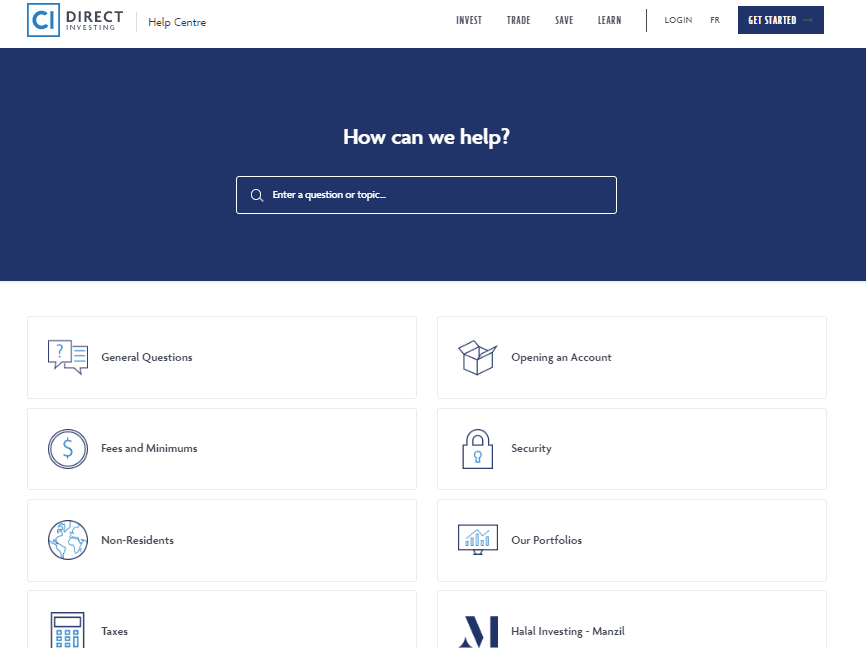
Source: CI Direct Investing
But wait, there’s more.
Not only is ample documentation the customers’ preferred method of finding support, but also the cheapest to implement by far.
And if you think about it, that’s only logical. Customer service reps cost money and can only solve one support ticket at a time.
On the other hand, a single document in your knowledge base can help an infinite number of customers solve a certain issue at the same time.
To show you just how large this difference is, here’s a breakdown of costs for the most commonly used support channels.
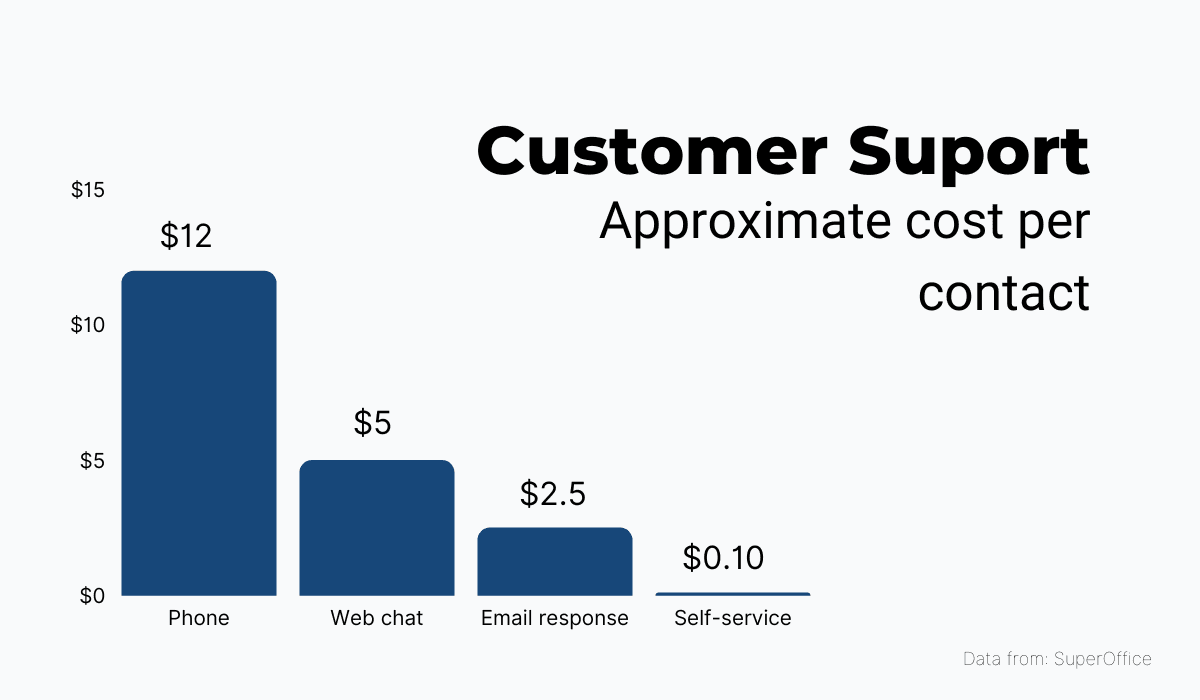
Source: Archbee.com
So, to recap, software documentation is extremely valuable when you look at it through the lens of customer support. It represents the customers’ preferred method of solving issues and getting support, and it’s much cheaper to establish compared to other support methods.
By offering ample software documentation, you’re much more likely to keep existing customers happy and attract new revenue from potential buyers who are looking for products with an excellent customer experience.
Documentation Builds Trust With Your Customers
Efficient customer support isn’t the only business benefit to be gained from offering software documentation. It can help your sales efforts as well.
Another recent development in customer behavior is that ads and direct sales haven’t been as effective at attracting customers as they used to be.
Buyers are becoming distrustful of targeted ads and salespeople when choosing software.
That explains why today, virtually all buyers want to self-serve at least a part of their customer journey.
They want to discover products themselves and do their own research into the features and benefits to see if it’s the right choice for them.
The term customer journey may be a little vague, so let’s see which specific aspects of it customers want to traverse independently when making purchasing decisions.
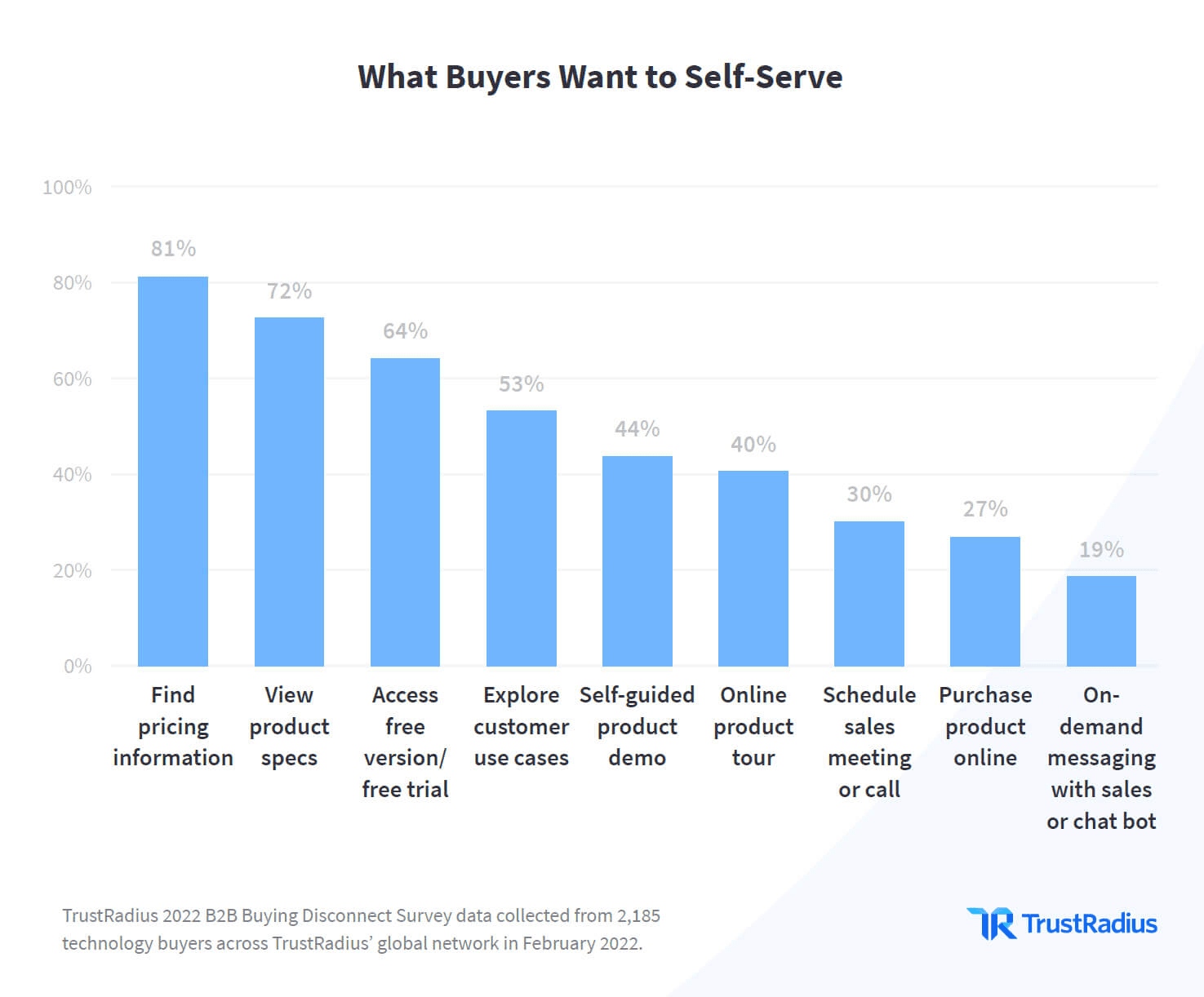
Source: TrustRadius
If you look closely, you’ll notice that many of these elements are, in fact, pieces of information commonly found in software documentation.
Product specs, use cases, and product tours are integral to any knowledge base, meaning your software documentation is a valuable resource for gaining a customer’s trust and influencing their buying decision.
For example, here’s Slack’s getting started guide that works as a comprehensive product tour for this communication app.
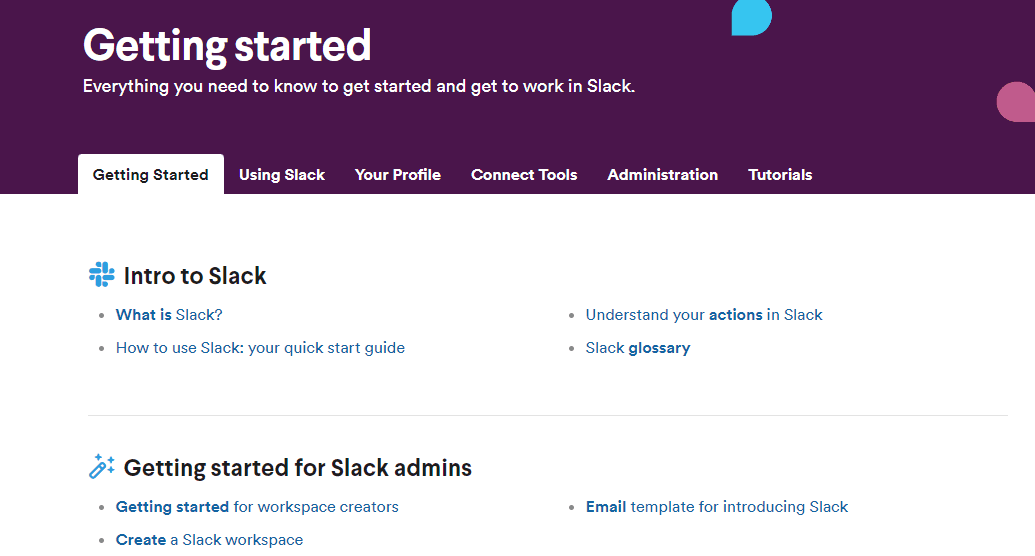
Source: Slack
An intro to the software is given, as well as a quick tutorial on using the features Slack provides.
These resources help potential adopters figure out the purpose of this tool and start learning how it’s used, which goes a long way to signal that the app can be trusted to fulfill the potential buyer’s needs.
However, it’s not just about convincing the customer that the product is the right fit for them.
Quality software documentation is also a signal that the buyer will be supported during the entire user journey and that they are likely to achieve success using the product.
A good case in point here is the famously good documentation of the payment processing software, Stripe.
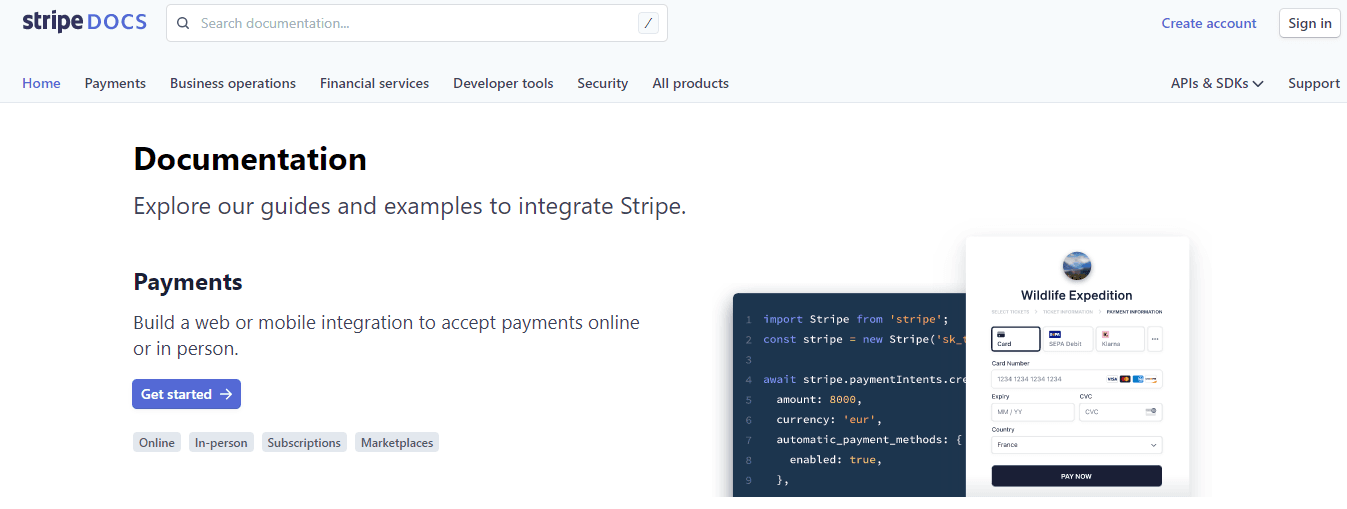
Source: Stripe
Stripe documentation is so helpful, offering support with everything needed to achieve success, that users can’t stop raving about it on social media.
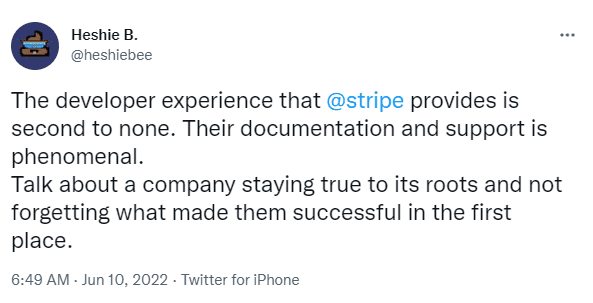
Source: Twitter
And since potential buyers don’t trust salespeople as easily as they used to, signals like these go a long way to show customers that a software product is not only trustworthy but also extremely valuable and worth the investment.
So, to conclude, it’s clear that today’s customers want to find out if a software product is a good fit for themselves.
That means you have to give them resources and be upfront about your offer, as well as signal to them that you're going to support them during their entire time they keep using your product.
Readily available documentation is the best and easiest way to do all of that.
Software Documentation Improves Your Operations
Knowledge really is power, especially when it comes to the workplace. Access to information can boost performance, while knowledge barriers can bring work to a halt.
And while enabling workers to share knowledge with each other is vital, systems need to be put in place so that employees can access knowledge independently.
Here’s why.
Software companies are extremely busy places. Studies show that employees all too often find it nearly impossible to obtain information from their colleagues.
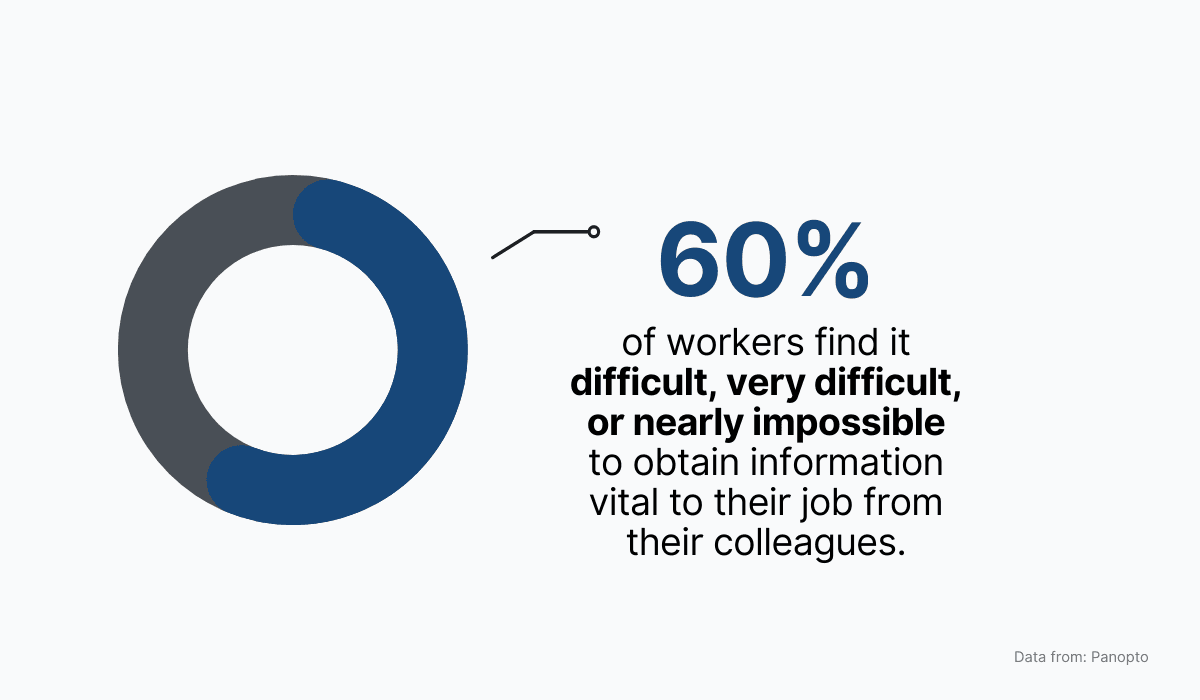
Source: Archbee.com
Without information vital to their work, employees can’t continue with their tasks and have to wait until the information is made available. This is when delays start happening.
Mind you, these are not minor pauses, but delays that compound until projects are far behind schedule.
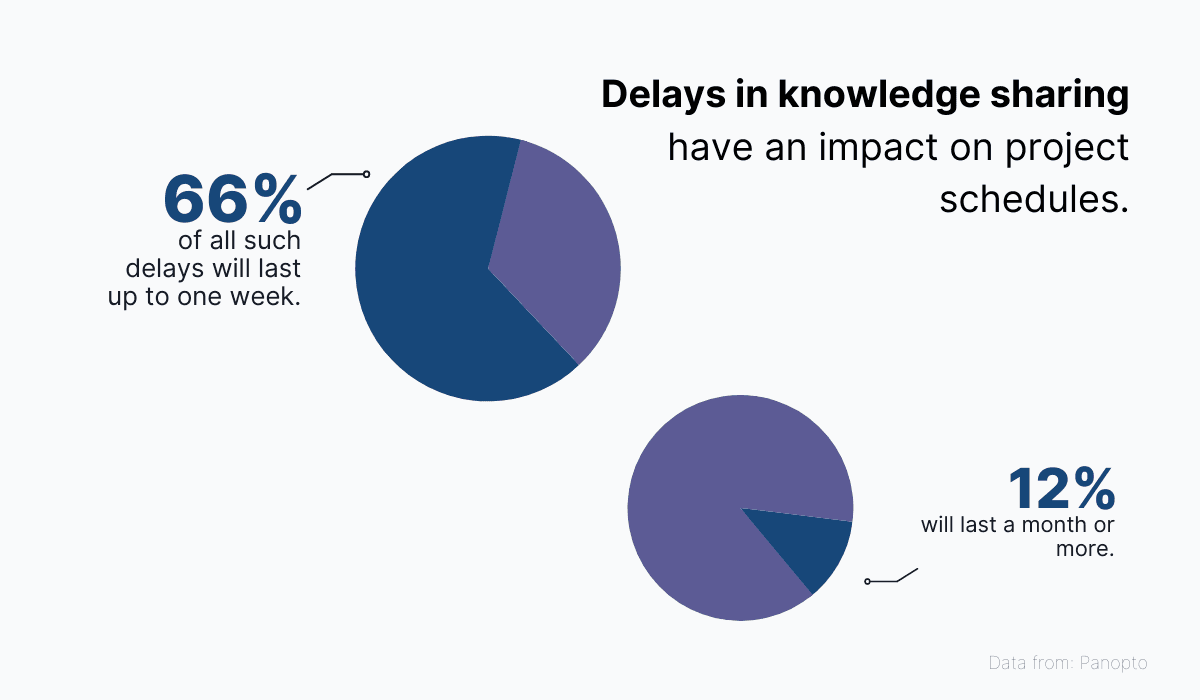
Source: Archbee.com
On the other hand, when everyone on the team has equal access to information vital for work, projects can progress more smoothly because a significant cause of delays has been completely removed.
If you’re working with software, one way to provide this level of access is to diligently document your projects and allow people working on them to approach the documentation whenever they need to.
This works on the level of the code itself, which can be documented with descriptions and comments as it’s being created.
Tools like JavaDoc or JSDoc will enable you to document your code in multiple languages, so everyone is on the same page.
Here’s a quick example of a JavaDoc just to show you how detailed and useful this kind of documentation can be.
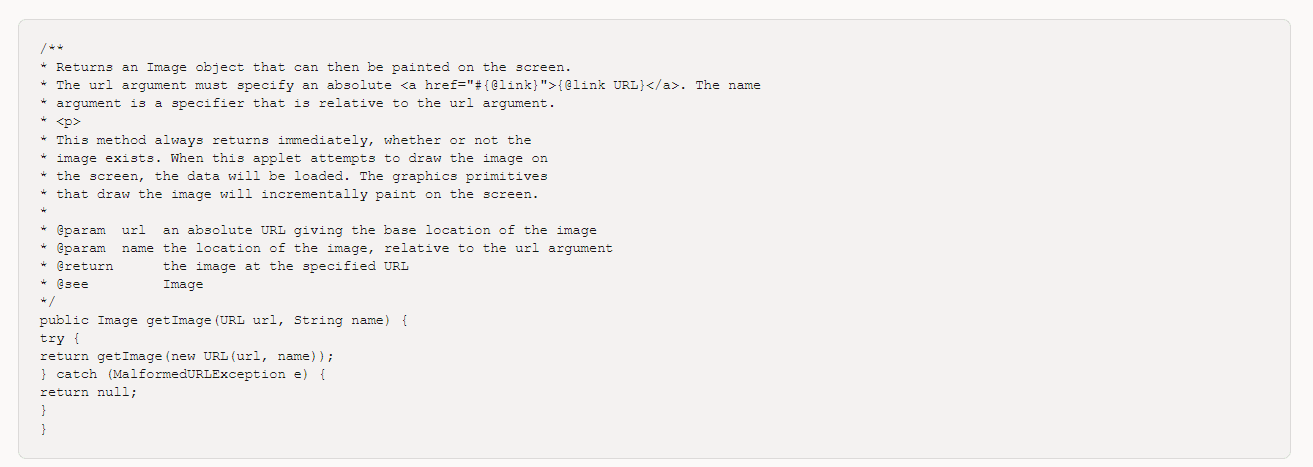
Source: Oracle
With this resource, developers will need less external support from senior staff on the project, and new developers will be able to dive straight into the work without a long onboarding period.
That way, situations like the one below can be easily avoided.

Source: Reddit
Furthermore, even client-facing documentation can be very valuable to internal teams.
For example, a well-documented API can help both clients using the API for their own product and internal teams updating and developing the software.
An instance of this might be accessing the API reference to see which endpoints have been built and what they look like so that new ones can be modeled in the same way.
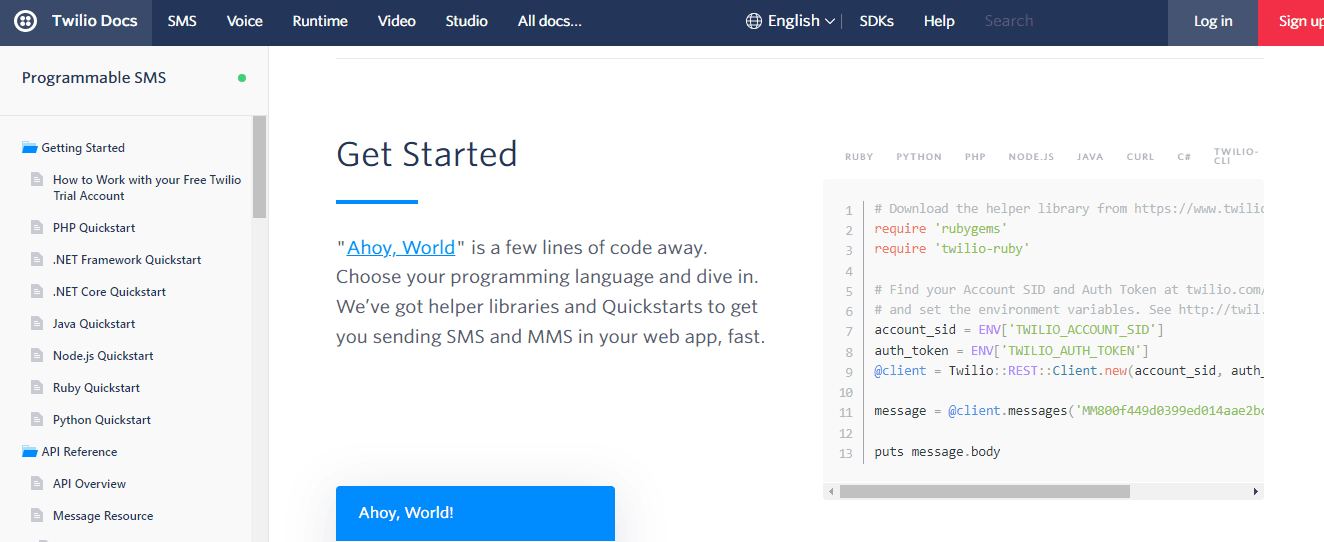
Source: Twilio
This is especially useful for software providers with a large API reference, like Twilio’s above.
API documentation can also act as a library for the team members who need to quickly look at resources such as code samples or the source code.
In this case, the documentation helps them work faster by providing them with resources they can instantly use instead of writing them from scratch.
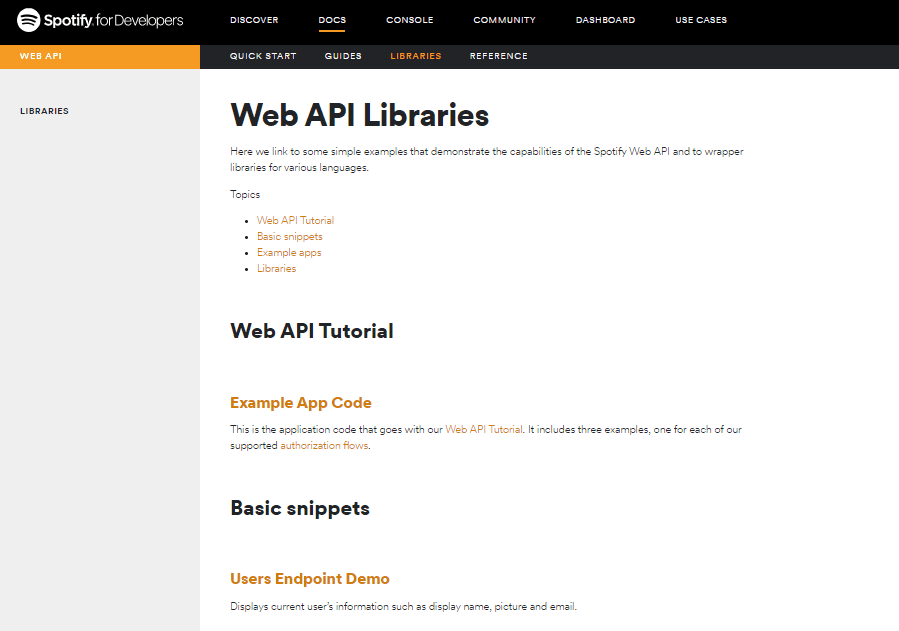
Source: developers.spotify
So, as you can see, software documentation can help your internal team work more efficiently, on top of providing numerous benefits for potential customers and end-users.
However, we’ve barely scratched the surface of the benefits that documentation can have for employees. Let’s see what else it can do.
Documentation Makes Onboarding New Staff Easier
Onboarding new employees is an information-intensive process.
That’s especially true when newcomers to complex software projects need to quickly get acquainted with a mountain of code, as well as the workflows unique to the development team they are joining.
Unfortunately, employee onboarding still isn’t being taken seriously enough by companies.
This is evidenced by the fact that a great majority of workers feel their company could do better with employee onboarding.

Source: Archbee.com
Now, many companies approach this problem by automating onboarding as much as possible and providing self-service onboarding tools, such as BambooHR and Sapling, so that new hires don’t need to depend on colleagues and superiors in their early days on the team.
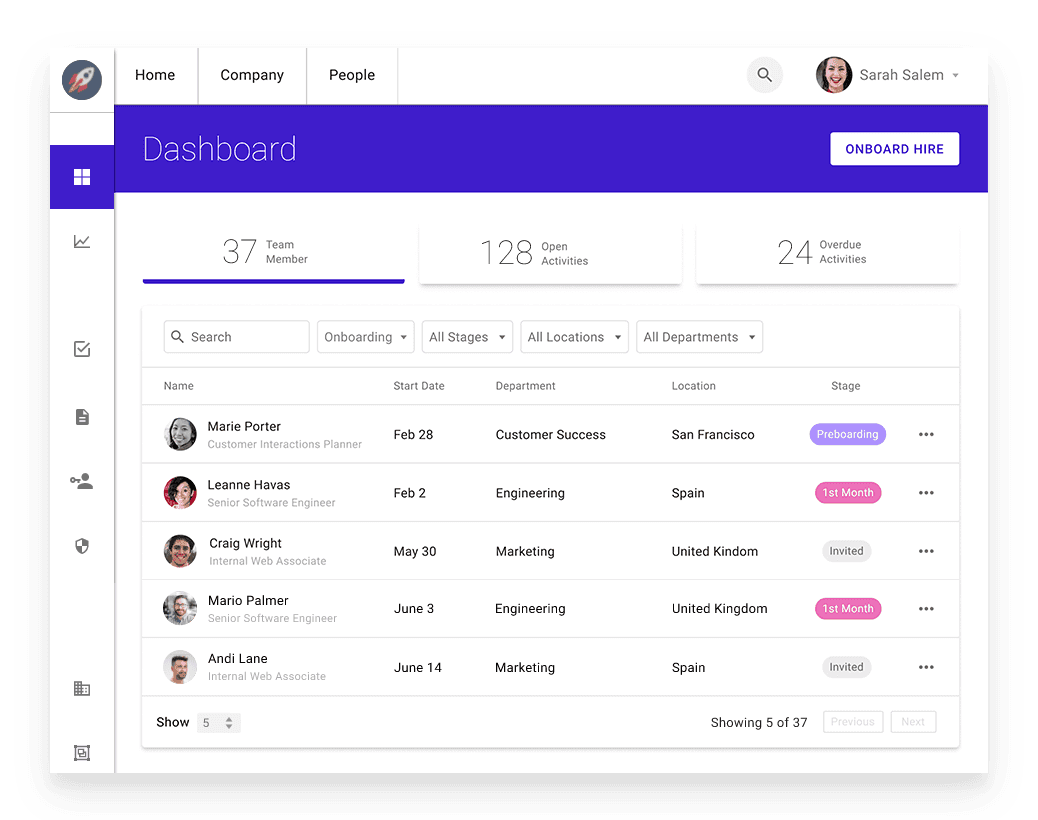
Source: Sapling
This definitely has merits, but it’s only half of the story. New employees don’t just need support as they navigate the onboarding process; they also need access to information.
Once again, that’s where documentation plays a key role.
By documenting the software you’re building, the workflows that make up your company, and the procedures for every conceivable situation, you provide new hires with a reliable source of truth to turn to so they can feel safe and confident in their work.
This extensive documentation can come in the form of an internal Wikipedia-like portal or a comprehensive employee handbook.
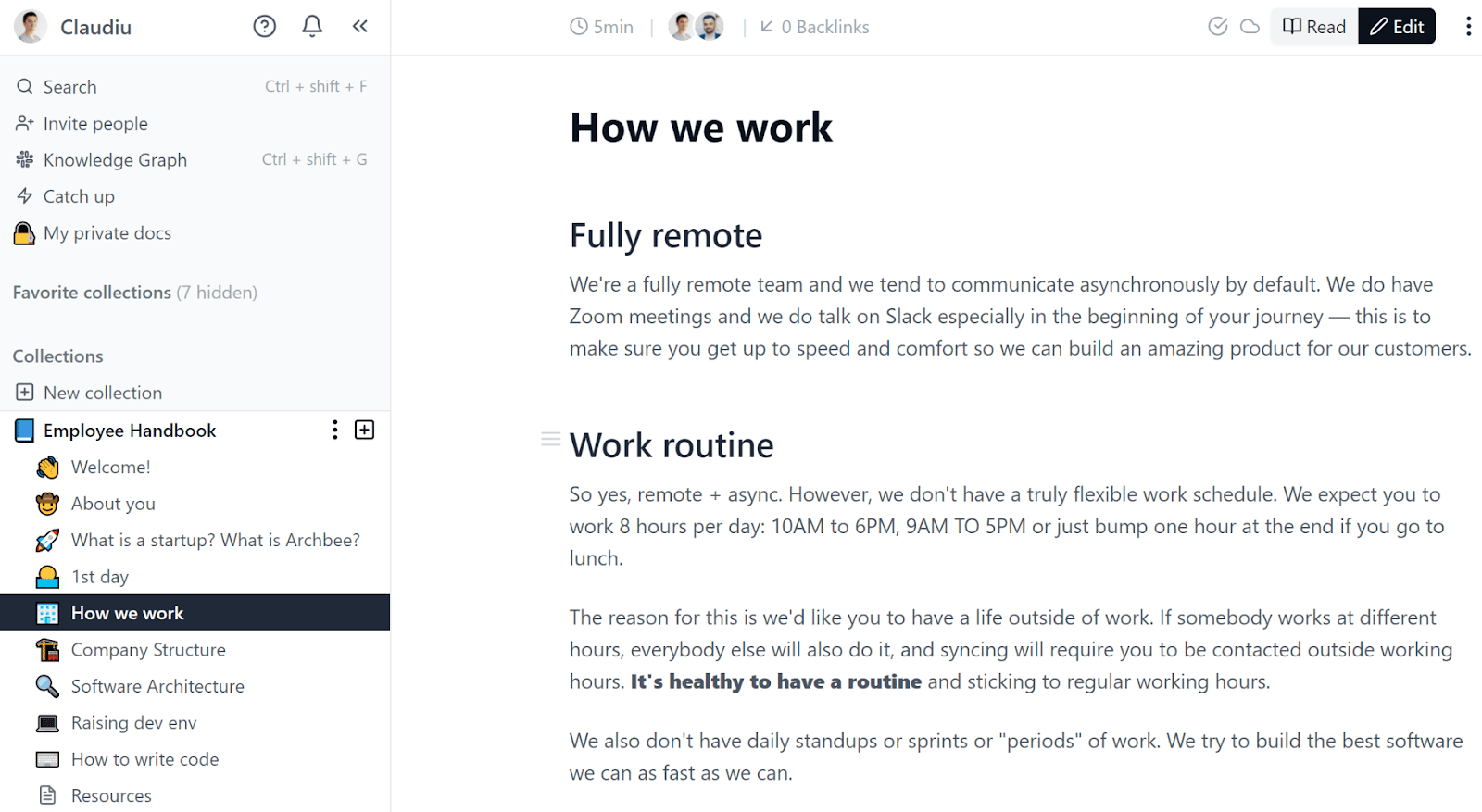
Source: Archbee.com
The more information you include in this resource, the fewer dilemmas your new hires will have to face as they’re settling in.
For instance, GitLab is quite famous for its comprehensive handbook, which would span more than two thousand pages if it were to be printed.
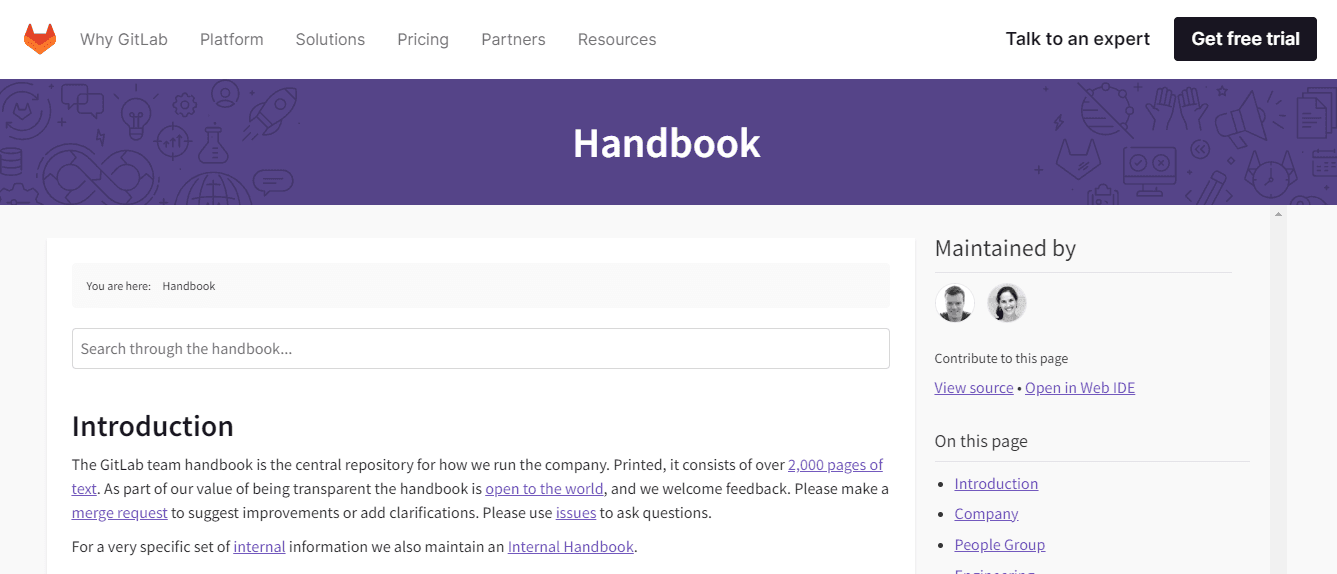
Source: GitLab
The information contained in the handbook covers everything, from the employee’s first day to the specifics of software development.
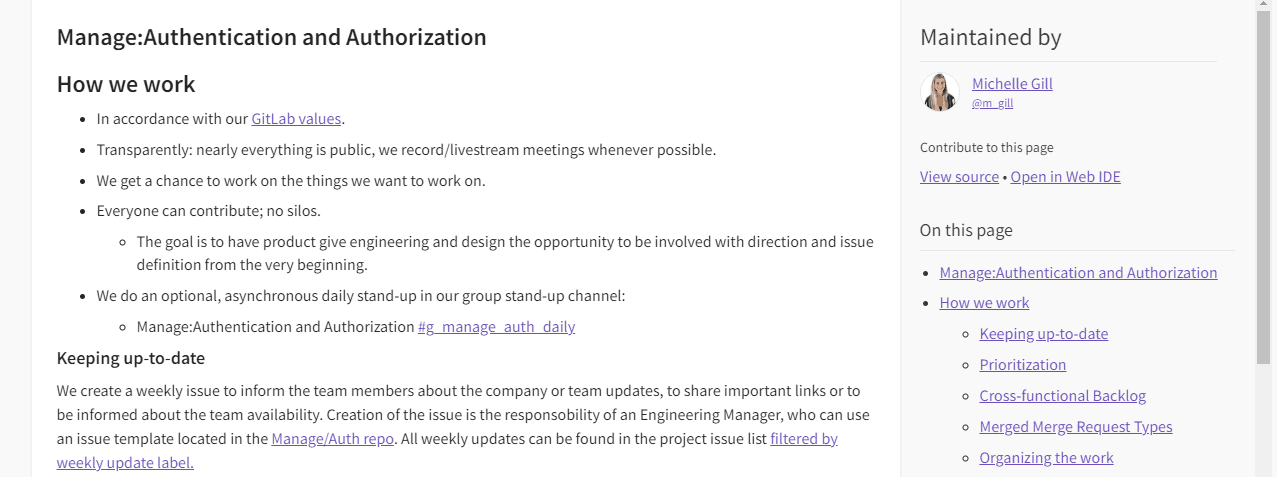
Source: GitLab
GitLab, as a large, fully remote company, considers its handbook indispensable. Sid Sijbrandij, the CEO, says it’s immensely helpful for onboarding new employees:
“We’ve also found that onboarding remotely with the help of our handbook can be easier and more structured than an in-person onboarding experience.”
An employee handbook is just one of several extremely beneficial functions of your software documentation.
Therefore, if you haven’t already, start enriching your documentation with resources that will help new employees learn the ropes at their new company.
Software Documentation Helps You Standardize Things
One final benefit of software documentation is that it can help you solidify work processes and bring order to any workflow.
In other words, software documentation can enable you to establish standard operating procedures (SOPs) and help your employees stick to them.
This is another way documentation can be used to lock in knowledge and ensure everyone at the company is on the same page.
Once a set of SOPs is put in place, mistakes are a lot less likely to happen, and employees can work faster because they know exactly how to proceed.
There are numerous ways software documentation can contribute to establishing standard operating procedures.
For example, you can include step-by-step instructions that detail how to successfully complete a certain task.
Here’s a set of instructions for implementing 0Auth from Dropbox:
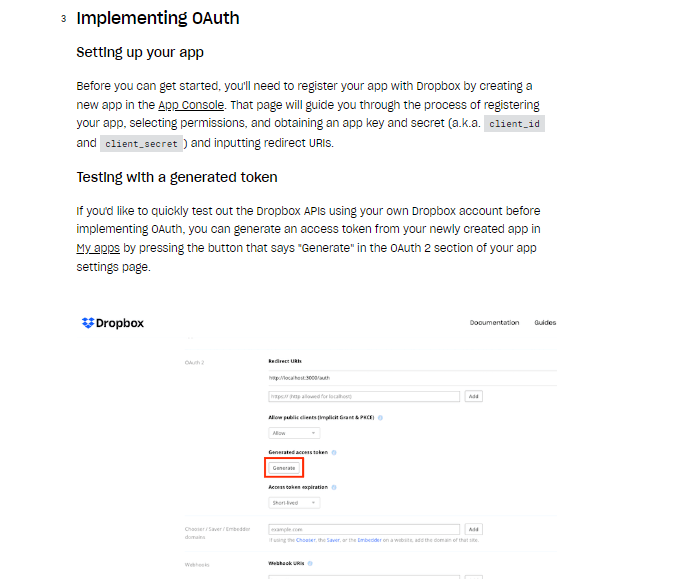
Source: Dropbox
As you can see, the procedure is given sequentially, with code snippets and images included to ensure that the steps are taken correctly.
Each time a user takes on this task, they will get the same results provided the guide is followed to the letter.
And that’s exactly what an SOP is—a sequential set of steps needed to accomplish a specific task.
Another way to standardize tasks is to provide an acceptable method of working with the software.
An example of that would be the authorization guide, a staple of any API documentation.
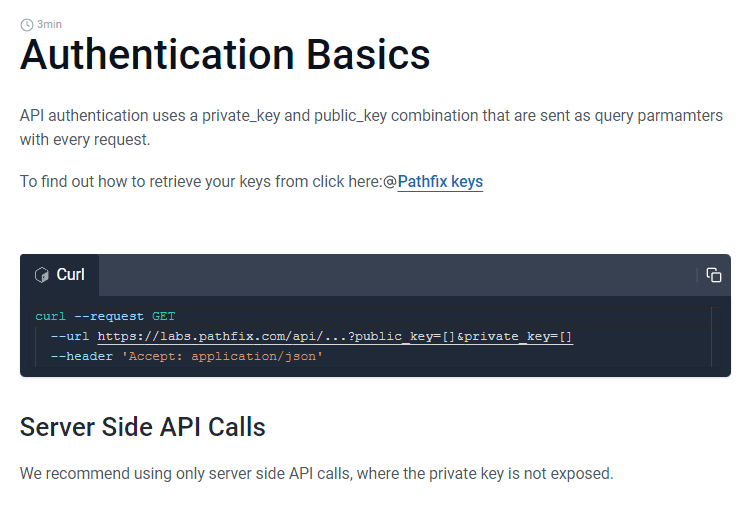
Source: Pathfix
The authentication process for APIs isn’t universal, so it’s very useful to have a resource you can access to see your API’s standard.
The most important thing to note here is that both examples have ready-made resources that help the user understand an operating procedure (screenshots in the 0Auth example) and take immediate action (live code in the API authentication example).
The more interactive elements like these you can include in the SOP, the faster the user will be able to complete the task.
Modern documentation software will enable you to input all kinds of formats, such as plain text, diagrams, multimedia, and code, in your standard operating procedures.
Our own documentation platform, Archbee, actually has more than 30 custom blocks you can use to navigate a user through a work process successfully.
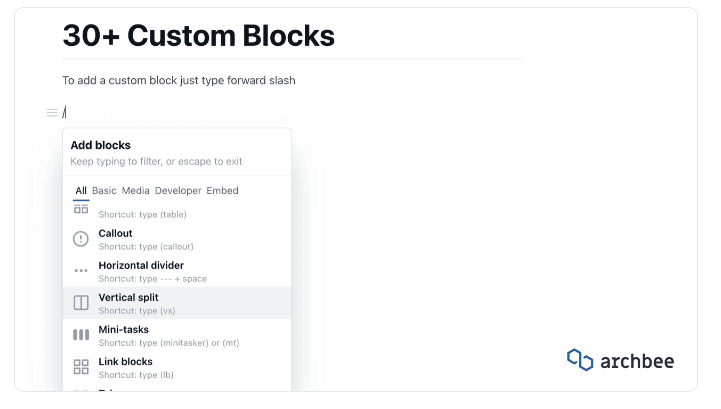
Source: Archbee.com
This makes your software documentation the perfect place to detail your SOPs and ensure they’re clear enough for anyone to follow.
Remember, standardization paves the way for maximum efficiency and productivity.
So try to provide detailed instructions on how work should proceed on your software as you’re documenting it for wider use.
Conclusion
We hope this article has been successful in showing you some different perspectives on software documentation.
Documentation can help any and every person involved with your software, be it outside users and potential customers or the staff that’s actively working on it. That's why your team really need to find the time to write software documentation.
The bottom line is that software documentation can help you keep your users, as well as staff, happy and productive, so it’s definitely worth the time needed to write it.
FAQ
Frequently Asked Questions
Great documentation lets customers solve problems on their own—fast. Clear tutorials, how‑to guides, FAQs, and troubleshooting articles deflect repetitive tickets, provide 24/7 support, and give consistent, accurate answers every time. Unlike one‑to‑one channels, a single article can help thousands of users simultaneously, making it both scalable and cost‑effective. The result: shorter resolution times, happier customers, and a lighter load on your support team.



